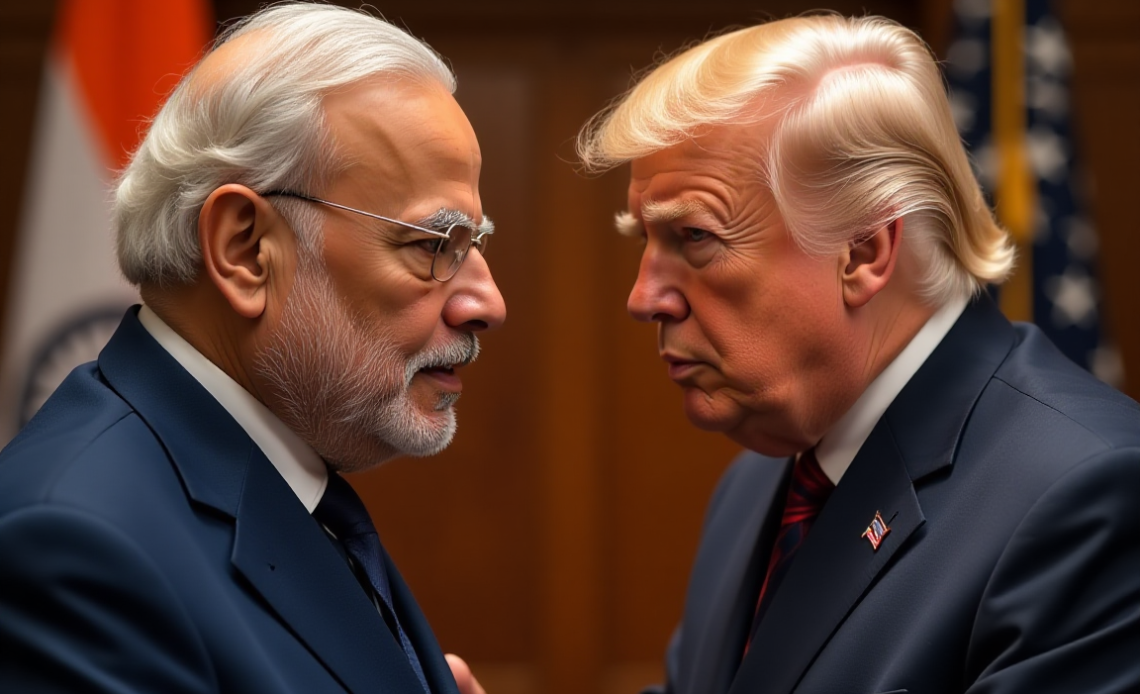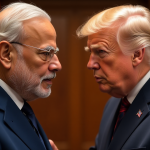
The Indian rupee fell against the US dollar even after Donald Trump hinted of an upcoming deal with India. The USD/INR exchange rate rose to a high of 86, up from its low of 83.7 on May 2.
Donald Trump hints of India deal
The USD/INR exchange rate rose as investors reacted to the latest trade announcements by Donald Trump. In a series of Truth Social posts, Trump posted letters to several countries, imposing substantial tariffs that wll take effect in August.
For example, Trump will impose a 25% tariff on countries like South Korea and Japan if they don’t reach a deal with the United States. This tariff threat is a sign that the three months of talks did not produce tangible results.
The tariff threat is also a way for Trump to receive concessions from these countries ahead of the deadline.
Most notably, Trump said that the US was close to a deal with India. Such a deal will likely have India accept the 10% tariff that countries like the UK and China have accepted. The US will also waive some levies on key Indian sectors.
India and the US conduct a substantial amount of trade every year. The most recent data showed that the US was the largest trading partner, with over $186 billion in bilateral trade. India’s exports to the United States rose to $86.5 billion, while imports stood at over $45 billion.
BRICS tariff threat and FOMC minutes
The Indian rupee also weakened because of Donald Trump’s threat to impose a 10% tariff on BRICS companies and their partners. India will be affected in all this because it is a founding member of the organization. In a statement, Min Gyeong-won, an analys, said:
“Most Asian currencies should remain broadly stable despite short-term swings. However, the Indian rupee, Southeast Asian currencies face relatively higher pressure due to BRICS-related uncertainties and limited agricultural market liberalization.”
The next catalyst for the USD/INR exchange rate will be the upcoming Federal Reserve minutes schedule on Wednesday. These minutes will provide more information about the last meeting and what to expect in the coming months.
The Fed left interest rates unchanged between 4.25% and 4.50%. Analysts expect the bank will maintain interest rates steady in the coming meeting and possibly restart cutting in September.
The Reserve Bank of India (RBI) has been in an aggressive rate-cut cycle as it seeks to boost the economy. It slashed rates by 50 basis points in the last meeting and reduce the cash reserve ratio by 100 basis points.
USD/INR technical analysis
The daily chart shows that the USD/INR exchange rate bottomed at 83.7 in May and has now bounced back to 85.72. It is oscillating at the 50-day and 100-day moving averages.
The pair has also formed an ascending channel, indicating that the continuation pattern is likely to continue. Therefore, the USD to INR pair will likely continue rising as bulls target the key resistance level at 86.50. A drop below the lower side of the ascending channel will invalidate the bullish view.
The post USD/INR forecast: Here’s why the Indian rupee is falling appeared first on Invezz






